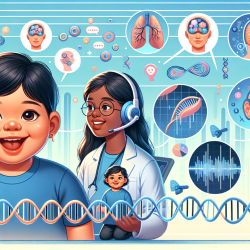Introduction
Recent advancements in genetic research have opened new avenues for understanding craniofacial disorders, which are among the most common congenital defects. The study titled "Integrative analysis of transcriptome dynamics during human craniofacial development identifies candidate disease genes" offers groundbreaking insights that can be pivotal for practitioners aiming to enhance their skills and improve outcomes for children with these conditions.
Understanding the Research
The study conducted a comprehensive analysis of gene expression during the critical stages of human craniofacial development. By performing bulk and single-cell RNA sequencing on human craniofacial tissue from 4-8 weeks post-conception, researchers identified 239 genes that are strongly expressed during craniofacial development. This discovery is significant because it highlights potential candidate genes that could be responsible for craniofacial disorders.
Moreover, the study found that craniofacial-biased developmental enhancers are enriched around these genes, suggesting a regulatory network that could be pivotal in understanding the etiology of these disorders. The integration of transcriptomic and epigenomic data led to the identification of 539 genes likely contributing to craniofacial disorders, many of which had not been previously associated with such conditions.
Implications for Practitioners
For practitioners in speech-language pathology and related fields, these findings offer a valuable resource for improving diagnostic and therapeutic approaches. Here are some ways to implement these insights:
- Enhanced Diagnostics: Utilize the identified candidate genes as biomarkers for early detection of craniofacial disorders, allowing for timely interventions.
- Targeted Therapies: Develop personalized treatment plans based on the genetic profile of individuals, potentially improving the efficacy of interventions.
- Collaborative Research: Engage in multidisciplinary research to further explore the regulatory networks identified, contributing to a deeper understanding of craniofacial development.
Encouraging Further Research
While this study provides a robust framework for understanding craniofacial disorders, it also highlights the need for continued research. Practitioners are encouraged to collaborate with geneticists and other researchers to explore the functional roles of the identified genes and their interactions within the regulatory networks.
By participating in or supporting further research, practitioners can contribute to the development of innovative diagnostic tools and therapies that could significantly improve outcomes for children with craniofacial disorders.
Conclusion
The integrative analysis of transcriptome dynamics during human craniofacial development marks a significant step forward in our understanding of these complex disorders. By leveraging these insights, practitioners can enhance their skills and contribute to better outcomes for children affected by craniofacial disorders.
To read the original research paper, please follow this link: Integrative analysis of transcriptome dynamics during human craniofacial development identifies candidate disease genes.










